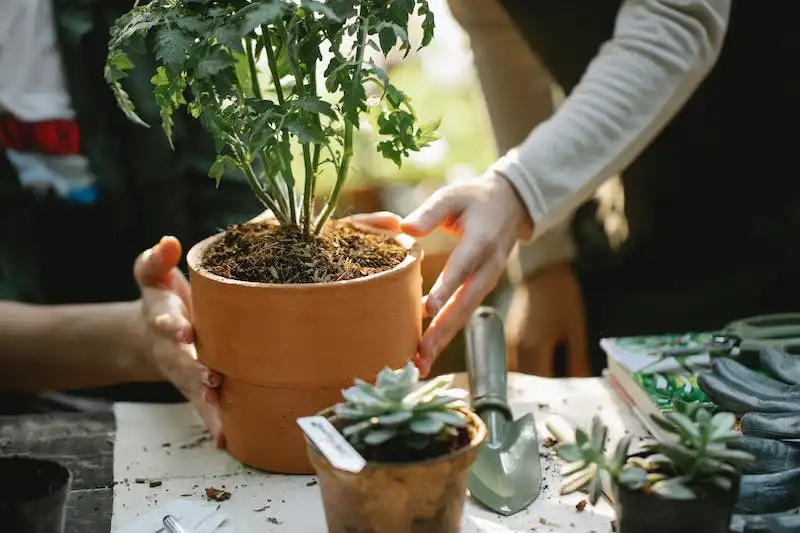The angelica plant (Angelica archangelica) is a common herbaceous perennial that belongs to the Apiaceae family, which includes carrots, celery, and parsley. It is highly valued for its external and internal uses, as well as its unique appearance and feedback from gardeners and herbalists.
When it comes to its uses, there are many. Angelica has long been used in traditional medicine to support respiratory health, relieve menstrual cramps, and more. Its large, bold leaves and tall flower stalks add a touch of drama to any garden. Angelica also prefers cool, moist areas with partial sunlight.
For those interested in growing angelica from seed, it is important to note that germination can be a bit tricky. The seeds should be sown in early spring, barely covered with perlite, and kept at a depth of about 1/8 inch. Moisture and high-quality fertilizer are key to successful germination.
Once the seedlings appear, they should be planted in pots or directly in the garden at a spacing of about 18 inches to allow for their vigorous growth. Angelica plants are known for their aromatic leaves and the most commonly consumed part of the plant is the root. The plant can be harvested after three years of growth, but the leaves can be harvested sooner if desired.
When it comes to overwintering, angelica will die back to the ground unless planted in a protected area. It is recommended to cut back the stems to ground level before the onset of winter and cover the area with a layer of mulch to preserve moisture. Angelica can also be grown in containers and brought indoors during the winter months.
Overall, angelica is a great addition to any garden due to its unique appearance, flavor, and medicinal properties. Whether you are a beginner or an experienced gardener, learning how to grow and care for angelica will be a rewarding experience.
Sources: Evgeniya’s Garden, Gardening Websites
How to Grow and Care for Angelica Plant
The Angelica plant belongs to the genus Angelica, which includes about 60 species. If you want to grow this herbaceous perennial, you need to know some important rules. Angelica plants are native to cool climate regions, including Greenland. They have been known for their medicinal uses for thousands of years, often referred to as the “archangelica” in traditional medicine.
To start growing Angelica, you need to select the right type of plant. There are different types available, including Angelica archangelica and Angelica atropurpurea. You can grow Angelica plants from seeds or seedlings.
When selecting a location for your Angelica plant, choose a spot that receives partial sunlight and has fertile, well-drained soil. The plant thrives in moist, cool conditions, so avoid areas with excessive heat or dryness. Angelica plants also grow well in pots, so you can grow them in containers if you have limited space.
To prepare the soil for planting, enrich it with organic matter and perlite to improve drainage. Angelica plants prefer slightly acidic to neutral soil pH. Once the soil is ready, sow the seeds or transplant the seedlings, spacing them around 18-24 inches apart.
To care for your Angelica plant, provide regular watering to keep the soil consistently moist. However, avoid overwatering, as this can lead to root rot. Fertilize the plant every few weeks during the growing season with a balanced fertilizer to promote healthy growth.
Angelica plants can grow tall and often require support to prevent them from falling over. You can use stakes or cages to provide the necessary support.
When it comes to harvesting Angelica, the roots are the most commonly used part of the plant. They are harvested in the first or second year of growth. The roots can be dried and used in herbal teas, tinctures, or as a flavoring agent in culinary dishes. The stems, leaves, and even the seeds of Angelica also have uses in cooking and traditional medicine.
In conclusion, growing and caring for an Angelica plant requires some effort, but it can be a rewarding experience. Follow the guidelines mentioned above and enjoy the aromatic beauty and various uses of this unique plant in your garden.
| Common Name | Scientific Name | Description |
|---|---|---|
| Angelica | Angelica archangelica | A tall, stout plant with green leaves and umbrella-shaped clusters of small, greenish-white flowers. The plant has a strong, aromatic scent. |
| Angelica | Angelica atropurpurea | A smaller plant with deep purple stems and leaves. It produces clusters of small, purplish flowers. |
How to Plant Angelica
If you want to grow angelica plants, it is important to know the right way to plant them. Angelica is a genus of plants in the Apiaceae family and there are about 60 known species. This herb has been used for centuries for its medicinal properties and in traditional folklore. It is widely grown in many countries, including the United States.
Before planting angelica, you need to select a suitable location for it. Angelica plants prefer partial shade, so choose an area that receives some sunlight but is not too exposed. The soil should be rich and moist, with good drainage. You can improve the soil by adding organic matter like compost or well-rotted manure. Angelica plants require a lot of space to grow, so make sure to space them at least 3 feet apart.
Angelica can be planted either from seeds or divisions. If you want to start from seeds, begin by sowing them in plastic pots or seed trays. Sow the seeds at a depth of about twice their size and keep the soil moist. It is important to note that angelica plants have a long germination period, sometimes taking up to 3 years to appear. To speed up germination, you can place the pots in a plastic bag to create a humid environment. Keep the pots in a cool place, around 41°F (5°C), for about 4-5 weeks before moving them to a warmer area.
When the seedlings are large enough to handle, you can transplant them into the prepared garden area. Dig a hole that is slightly larger and deeper than the root ball of the plant. Carefully remove the seedling from the pot or tray and place it in the hole. Fill in the hole with soil and firm it down gently. Water the plant well after planting to help it establish.
Angelica plants require regular care to thrive in the garden. They prefer a cool and moist environment, so make sure to keep the soil evenly moist. Water the plants deeply once a week, or more frequently during hot and dry periods. Angelica plants benefit from a fertilizer application in early spring, using a balanced fertilizer. Mulching around the plants will help to conserve moisture and suppress weed growth.
Angelica plants can grow quite tall, up to 6 feet or more, so they may need support to prevent the stalks from bending or breaking. You can use stakes or plant supports to provide the necessary support. Be careful when handling angelica plants, as some parts of the plant can cause skin irritation. It is advisable to wear gloves while harvesting or handling the plants. Additionally, angelica plants are poisonous if ingested, so keep them out of reach of children and pets.
Angelica plants can be harvested for their leaves, stalks, and seeds. The young leaves can be used to flavor soups, stews, and salads, while the stalks can be candied or used to make tea. The seeds are often used in baking or to make alcoholic drinks like absinthe. Harvesting can be done throughout the growing season, but it is best to avoid harvesting in the first year to allow the plant to establish itself.
In conclusion, planting angelica requires selecting the right location, caring for the plant properly, and being aware of its medicinal and potentially toxic properties. Follow these guidelines to successfully plant angelica and enjoy this versatile herb in your garden.
| Planting Angelica | |
|---|---|
| Light | Partial shade |
| Spacing | At least 3 feet apart |
| Growing Season | Cool |
| Care | Regular watering, mulching, and fertilizing |
| Support | Stakes or plant supports for tall plants |
| Harvesting | Leaves, stalks, and seeds |
| Health Warning | Poisonous if ingested, may cause skin irritation |
When to Plant Angelica
Angelica is a cool season plant that is primarily grown for its culinary and medicinal uses. The best time to plant angelica is in the spring, after the last frost date in your climate zone.
Angelica can be grown from seed or seedlings. If you choose to start from seed, it’s important to note that angelica seeds have a low germination rate. To increase the chances of successful germination, you can soak the seeds in water for about 24 hours before planting them. You may also consider using perlite to improve drainage in the seed starting mix.
When planting angelica seedlings, make sure to give them enough space to grow. The recommended spacing is around 18 to 36 inches between plants. Angelicas are tall plants that can reach heights of up to 6 feet, so they need room to spread out.
Angelica plants prefer a moist, well-draining soil rich in organic matter. They also require full sun or partial shade to thrive. Regular watering is essential, especially during dry periods. However, be careful not to overwater, as angelicas are prone to root diseases.
If you want to harvest the seeds or enjoy the flavorful leaf stalks, it’s important to know that angelicas are biennial plants. This means that they will not produce seeds or leaf stalks until their second year of growth. However, you can still enjoy the attractive flowering stalks that appear in the first year.
Before planting angelica, be aware that some people may have allergic reactions to the furocoumarins present in the plant. It’s best to consult with a healthcare professional if you have any concerns. Also, keep in mind that angelica plants can be toxic if ingested in large quantities, so it’s important to exercise caution, especially if you have small children or pets in your garden.
In summary, angelica is a versatile herb that can be grown both for its culinary and medicinal uses. It’s best to plant angelica in the spring, after the last frost date. Whether you choose to grow from seed or seedlings, make sure to provide them with the suitable growing conditions, including proper spacing and regular watering. Ensure to take precautions with the plant’s potential allergenic and toxic properties. Happy gardening!




